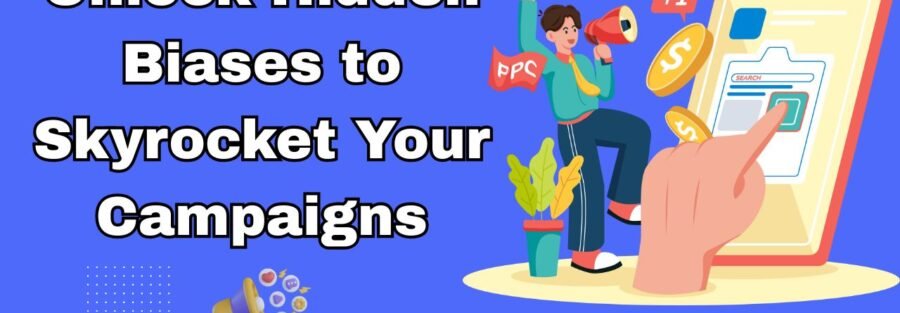Hidden Biases: The Secret Factor That Can Make or Break Your Marketing
Table of Contents
Introduction
What Hidden Biases Really Are
The Most Common Biases That Affect Decisions
How Biases Shape Consumer Behavior
Biases Inside Marketing Teams
Real-World Campaign Examples
How to Spot and Beat Biases
Why Fixing Biases Boosts Your ROI
Conclusion
Introduction
Marketing isn’t just about clever ads or fancy campaigns—it’s about understanding people. Beyond data and strategy, there’s something invisible that can make or break your results: hidden biases. These mental shortcuts influence how your audience reacts, and even your own team’s decisions.
The marketers who win aren’t just creative—they understand these hidden forces and use them to connect with customers in a more authentic way.
What Hidden Biases Really Are
Hidden biases are mental shortcuts we all use, often without realizing it. They affect decisions—from what people buy to what campaigns teams think will work.
For marketers, these biases are huge. They can make your messaging click or completely miss the mark. The smart approach is to spot them early and work with them, not against them.
The Most Common Biases That Affect Decisions
1. Confirmation Bias
People like information that matches what they already believe.
Example: A fitness brand highlighting “science-backed results” works because health-conscious consumers already trust scientific proof.
2. Anchoring Bias
The first thing someone sees often shapes how they think about everything else.
Example: Listing a product as “Originally $300, now $199” makes it feel like a great deal, even if $199 was always the plan.
3. Bandwagon Effect
We tend to follow the crowd. If others love it, we assume it’s good.
Example: Using “#1 bestseller” tags or influencer endorsements encourages people to buy because everyone else is.
4. Loss Aversion
People hate losing more than they love gaining. Scarcity works because of this.
Example: “Only 3 left at this price!” pushes people to act fast—they don’t want to miss out.
5. Familiarity Bias
We like what feels safe and familiar. Logos, slogans, and consistent messaging build trust.
Example: Coca-Cola sticks to its iconic red branding because people feel comfortable with it.
How Biases Shape Consumer Behavior
These biases aren’t just abstract ideas—they actively guide decisions. They affect how people compare products, pick services, and ultimately buy. Ignoring them can confuse or repel your audience, while using them thoughtfully can make your campaigns resonate more deeply.
For example, if a campaign doesn’t create urgency, it may not trigger action. If it doesn’t feel familiar, people may not trust it. Understanding these patterns is key to making smarter marketing choices.
Biases Inside Marketing Teams
It’s not just your audience—your team can be biased too.
- Recency Bias: Focusing too much on the latest results and ignoring long-term trends.
- Groupthink: Going along with the team instead of questioning assumptions.
- Overconfidence Bias: Believing a campaign will succeed just because it “feels right.”
These internal biases can cost time, money, and campaign effectiveness if left unchecked.
Real-World Campaign Examples
Apple’s Pricing: The high-priced “Pro” models make mid-tier options seem reasonable, leveraging anchoring bias.
Amazon’s Scarcity: “Only 2 left in stock” nudges buyers to act fast, tapping into loss aversion.
Nike’s Social Proof: Featuring athletes and influencers makes people feel like they’re part of a movement, using the bandwagon effect.
How to Spot and Beat Biases
- Audit Campaigns: Check if your messages are based on assumptions rather than real audience insights.
- A/B Testing: Replace guesses with data-driven decisions.
- Get Diverse Perspectives: Bring in different viewpoints to avoid groupthink.
- Talk to Customers: Analytics are great, but real conversations uncover hidden truths.
- Train Your Team: Awareness of biases can prevent mistakes before they happen.
Why Fixing Biases Boosts Your ROI
When you account for hidden biases, campaigns connect better and convert faster. You’ll waste less money, make smarter decisions, and build long-term customer trust. Understanding biases helps you craft messages that feel natural, persuasive, and ethical.
Conclusion
Hidden biases aren’t a problem—they’re just part of how people think. The marketers who succeed are those who notice them and use them strategically. By understanding both consumer and internal team biases, you can create campaigns that actually work, build stronger connections, and maximize your impact.

